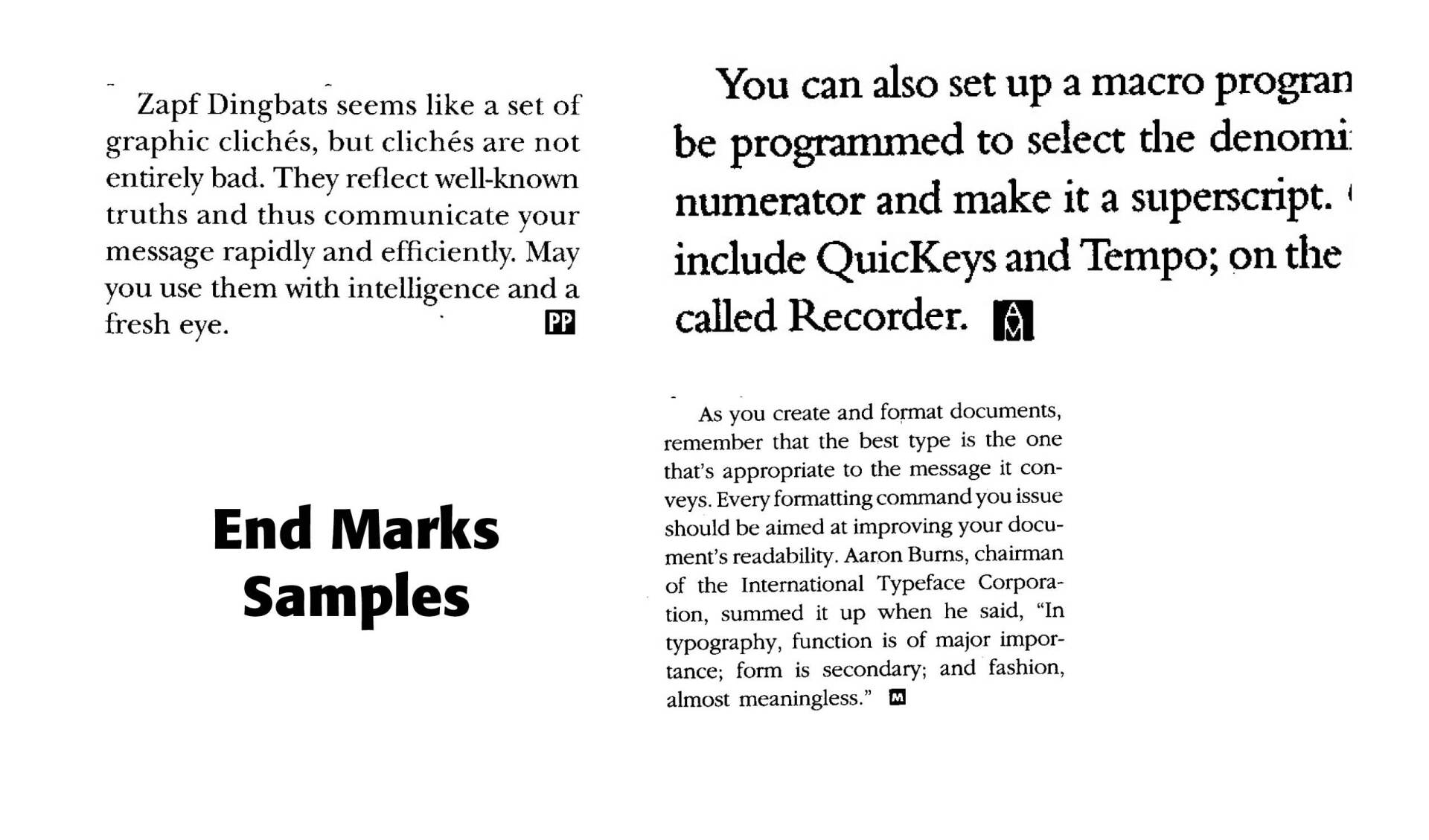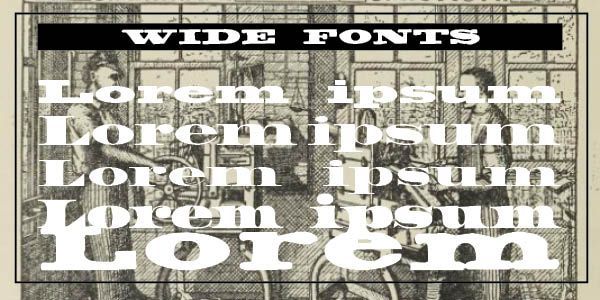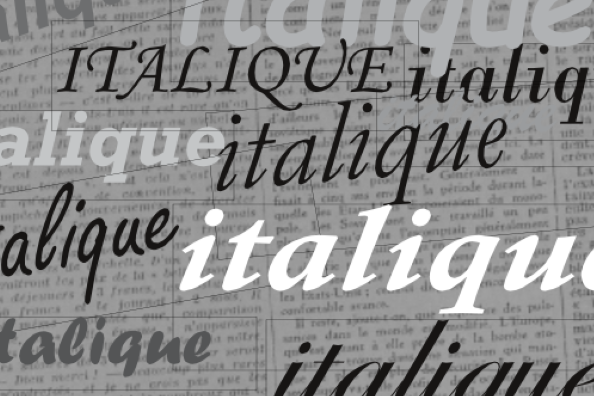End Marks

End Marks are used in magazines and articles, especially when the article is spread over a number of pages along with other articles or ads or images. They tell a reader when that particular article ends. The End Marks Samples above are from three different publications. The upper left is from an article by Kathleen Tinkel in Publish Magazine, March 1991. Upper right is from an instructional article on making fractions in PageMaker (4.0) in Aldus Magazine, July/August 1991. The bottom is from an article by Jim Heid in Macworld, June 1989. Each end point is different and each distinctive.
How are they made? Usually an image is scanned into a font developer program, like Fontographer, and placed in a character slot. It is then made into a glyph, a separate letter, if you will, in the font or in another font. This allows the writer or editor to conveniently and neatly place the end mark without having to shrink the main image and then somehow maneuver it into the end of a paragraph. See the diagram below as to how an end mark can be made.

Successful Layout & Design



